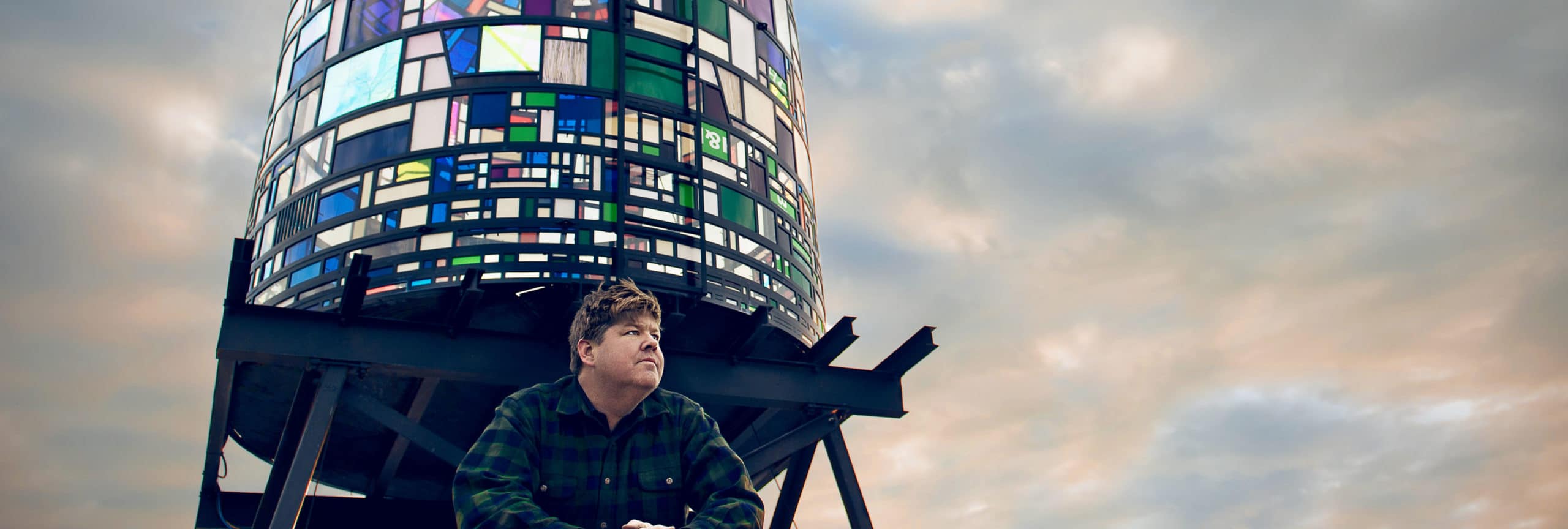
Meet Tom Fruin
Found plexiglass. Steel. Detailed craftsmanship and a commitment to sharing art in public spaces. It all comes together this summer in the form of From Sea to Shining Sea, an exhibition of Tom Fruin’s vibrant houses on display at Pier 17.
Brooklyn-based Fruin is known for his architectural-scale outdoor sculptures, which can be found in plazas and parks around the world. From Sea to Shining Sea features two such sculptures — Kolonihavehus, located on Upper Seaport Square, and Hi 5 Taxi Cab, situated on the Northeast Corner of the Heineken Riverdeck.
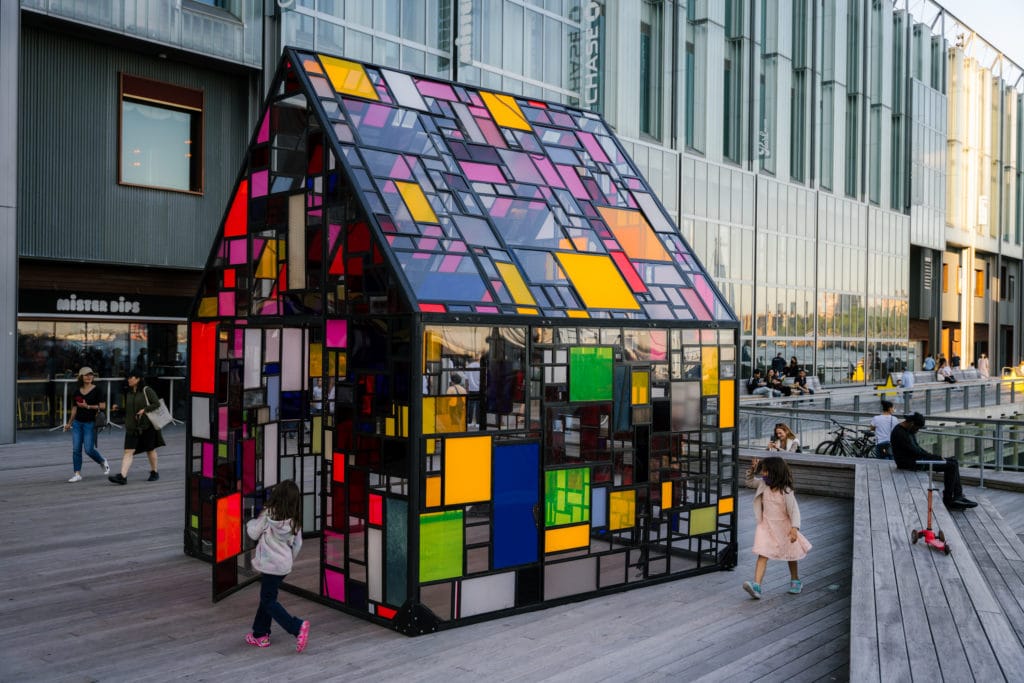
The installation brings together the past and present in a layered and purposeful way. One of the pieces is new and the other first constructed over a decade ago. The latter, Kolonihavehus, was the first in Fruin’s well-known ICON series of large-scale sculptures. Initially composed from roughly 1,000 scraps of individually framed plexiglass hand-welded into a delicate steel quilt, it was lovingly repaired by Fruin after its 12 years on show outdoors in cities such as Copenhagen, Vienna, and Prague. Fruin repaired some of the piece’s cracked panes in a method that references antique stained glass repair, but its well-traveled patina remains.
From Sea to Shining Sea is also in conversation with another of Fruin’s colorful creations, Watertower, which is on display in Brooklyn and can be seen through a viewfinder located next to Hi 5 Taxi Cab on the Heineken Riverdeck.
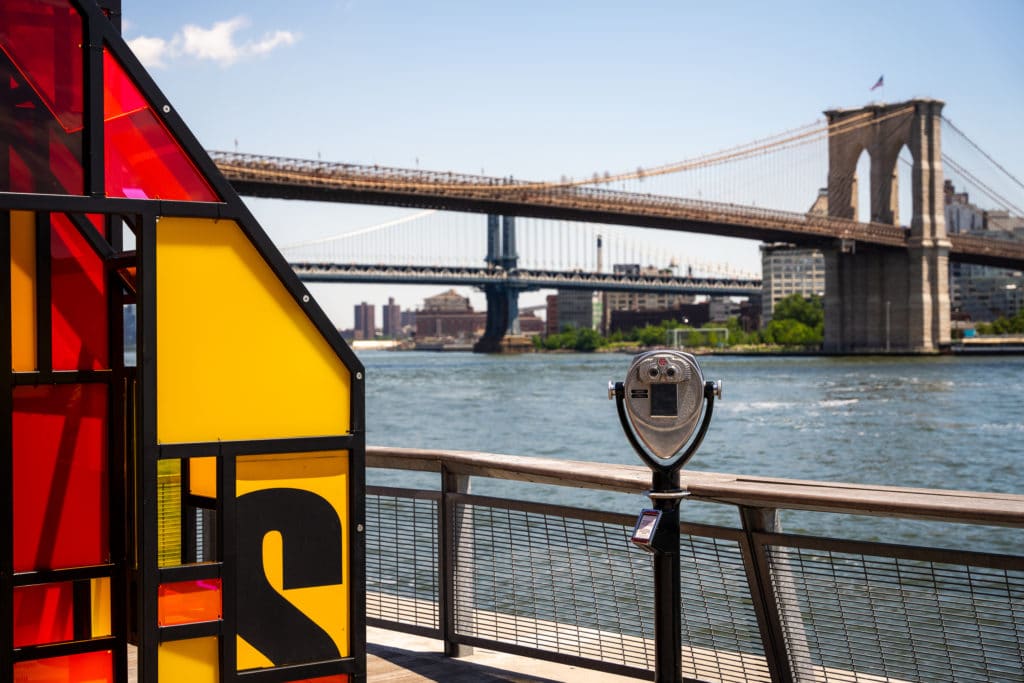
Here, Fruin shares his take on urban environments, how time affects his work, and how it all translates into this uplifting exhibition at the Seaport.
What appealed to you about installing From Sea to Shining Sea at the Seaport?
I love the Seaport and its vibrant energy! I’ve been coming through since ’96, when my studio was in Lower Manhattan. It is still an epicenter for commerce and culture even with the [original Fulton] fish market long gone: the ships, piers, shops, bike path, and views of the Brooklyn Bridge forge a connection to the past and remind me of the unique maritime location of the city which is responsible for so much of its history. The absolute respect for the past alongside the cultural offerings is unparalleled. I’m super impressed by the neighborhood — there’s something for everybody. It’s amazing that you can attend a 3,000-seat rooftop concert and still find yourself wandering down quaint cobblestone alleys on the way home — all in the shadow of the magnificent Brooklyn Bridge.
Importantly, the Seaport affords brilliant views of Brooklyn across the East River. From this vantage, using the vintage binocular viewer, one can spy my first public installation in NYC — Dumbo’s iconic stained-glass Watertower, installed 10 years ago this month on the roof of 20 Jay St. and, tracing south, Watertower 3 (R.V. Ingersoll Houses, 2014) in Brooklyn Bridge Park.
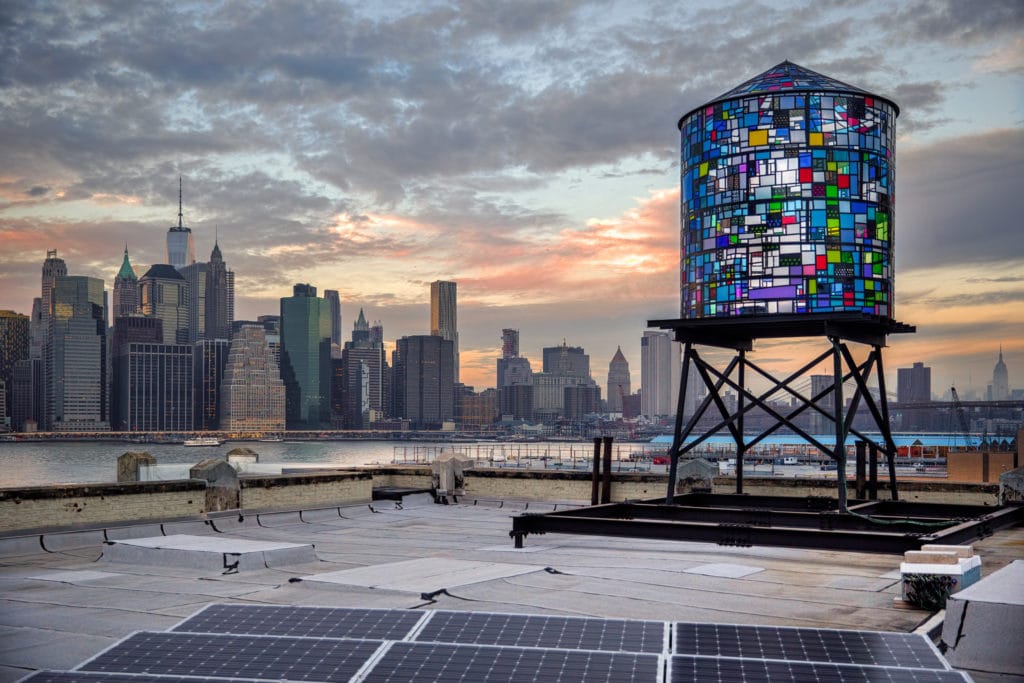
Your work has been exhibited all over the world. Is there something special to you about having your work in NYC?
NYC is a thriving hotbed of cultural activity and it’s probably the best place to be in direct conversation with the most diverse audience imaginable from all over the world. New York is also my new hometown (for 25 years) so it is especially fun to work with local signage and play with structures, themes, and experiences unique to New Yorkers like Watertowers and Taxi Cabs.
What is your relationship with past and present in terms of your work?
The first sculpture a visitor will encounter at the Seaport is called Kolohihavehus, originally made in Copenhagen 12 years ago. It has been exhibited all over Europe in Vienna, Prague, Sweden, and Denmark before landing on Brooklyn’s waterfront prior to this inaugural Manhattan debut. This artwork marked the beginning of the ICON series of monumental outdoor “stained-glass” works based on found-object quilts. The patterns reference the city grid while the crazy colors are a reflection of the vibrancy of diverse communities. The quilts were created 20 years ago but the awe and wonder of a newcomer’s experience continues to thrill — and I hope these sculptures pack some of that WOW! of seeing something for the first time. Hi 5 Taxi Cab is a newer installation.
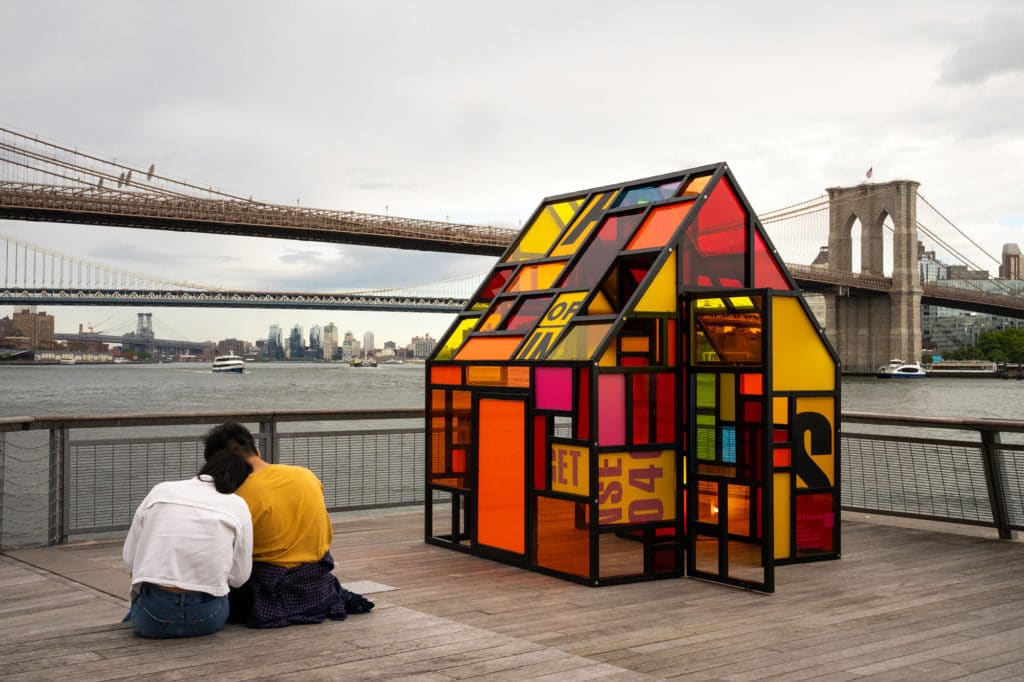
How has your creative process changed in the years between creating these two sculptures?
The stylistic evolution is a fun aspect of this Seaport exhibition, which includes my first sculpture from 12 years ago AND the most recent from 3 weeks ago! In the earlier works, I was more faithful to the source material: making compositions like scraps of fabric in a quilt, now (in Hi 5) there is more space and I’m able to highlight the salvaged materiality while letting the city breathe through.
Why is it important to you that your artwork is publicly accessible?
I feel that the best way to contribute to the artistic conversation and reach the widest, most diverse audience possible is to show work in a public setting; many people do not regularly pay to go to museums, and galleries can be more of an insider’s game. Also, my sculptures work best in active dialogue with the buildings and streets. I like to joke that my Watertower sculptures use buildings as pedestals.
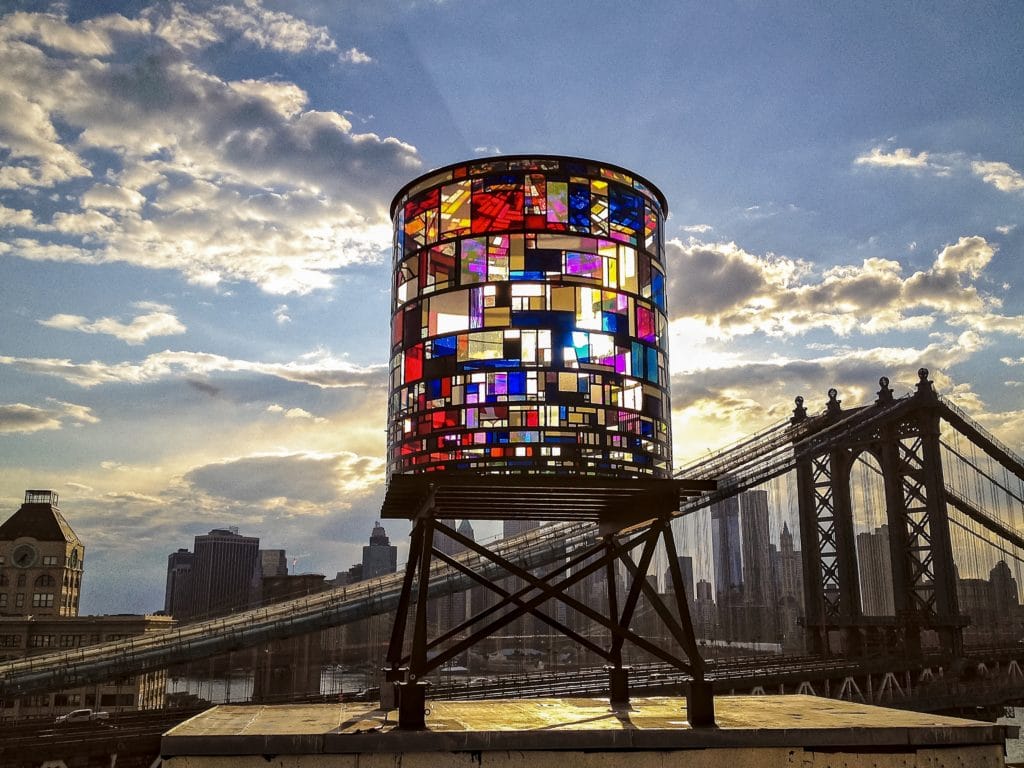
How do you continue to challenge yourself in your practice?
We fabricate the works in my Gowanus studio, which allows innovations and improvisation as the work develops. Every piece has slight technical and stylistic improvements over the prior sculpture. The Hi 5 Taxi Cab house is conceived as a blown-up version of a mini wall-based sculpture — the boxtube metal and larger window size reflects this change in scale.
What do you hope New Yorkers and visitors who encounter From Sea to Shining Sea at the Seaport take away from their experience?
This exhibition is a celebration of the vibrancy and variety of life reflected through a prismatic lens of recycled materials. These symbolic homes are stand-ins for humanity and our unique experiences with the earth as our collective home.
From Sea to Shining Sea is on show at Pier 17 through September, 2022. Find Kolonihavehus at Upper Seaport Square, and Hi 5 Taxi Cab at the Northeast Corner of the Heineken Riverdeck.
Share on Social: Tag @theseaport and @tomfruin in your photos of the installations on social media for a chance to be shared using the hashtag #SeaportArts.
